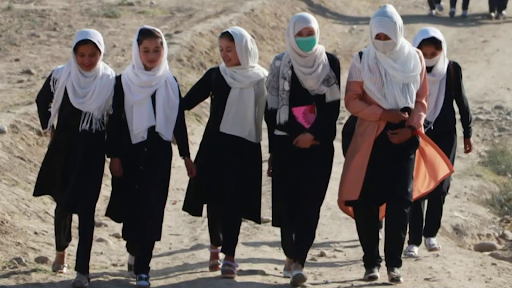Two Months Under Taliban Rule in Afghanistan

December 15, 2021
In August and September of 2021, it was really hard to tell what would happen in the weeks and months following the Taliban takeover. Many foresaw that Afghanistan would face a humanitarian crisis. Others seemed to doubt the reach they would have in the long term. Now, 2 months later, it is not only easy to see the changes that have taken place, but also the events that are to come in the long-term.
Humanitarian Crisis
One of the biggest concerns that has been noted since the first takeover was a looming humanitarian crisis. Just two months ago, this was an event in which many did not necessarily anticipate. However, now UN officials are saying that this is the beginning of the worst humanitarian crisis “we’ve ever seen”. For reference, a humanitarian crisis, disaster, or emergency is an event or series of events that pose a threat to the health and safety of a large population in a certain area. Currently, this definition is presenting itself in many worrying ways.
Firstly, about 23 million Afghans are in need of food. This is very concerning, given that the overall population in Afghanistan adds up to just under 40 million. That means over 50% of the population lacks basic necessities such as food. Further, it is projected that 97% of the population is at risk of “sinking into poverty”. These kinds of statistics do not just come from the panic of a sudden government transition. Since August, governments around the world have cut off access to international funding, and frozen the Afghan Central Bank’s $10 billion in abroad assets.
These shocks to the system could cause the Afghan economy (worth around $20 million) to lose up to a fifth of it’s worth. Most of the asset freezing done by international governments was meant to keep dangerous new officials from buying weapons that could harm anyone of their choosing. However, since this has happened, many everyday Afghan workers have not received their salaries, already putting them months behind on payments. As if this doesn’t already make it hard enough, the Taliban has banned the use of foreign currency according to Media Reports.
American Evacuation
According to Anthony Blinken, the Secretary of State, “about 340” Americans have been evacuated since the formal exit was made by the US. This is close to the number of people who had originally reported they wanted to leave, but since those reports came out, hundreds more have changed their minds. This may be because they have seen success with ongoing efforts, or because of the worsening living situations in any given corner of the country.
The State Department has formed a team to communicate evacuation plans with government officials in Afghanistan, as well as in other countries where refugees might go after they are evacuated, such as Germany. This team has a very delicate task, given the fact that the Taliban can pull unpredictable antics, such as canceling flights at the drop of a hat. Although this issue is complicated and ever changing, Blinken stated that “there’s no deadline to this effort”.
Everyday Life in Every Corner
In the North of Afghanistan sits a large city called Mazar-i-Sharif. It fell to the Taliban on the 11th of August. It was once an economically flourishing area; now residents are struggling to find food. Despite the knowledge that the Taliban is actively trying to prevent people from fleeing, many are trying to make their way to the Uzbekistan border to escape,
Lashkar Gan is split into provinces in the South. It fell to the Taliban on the 13th of August. This area saw heavy fighting in the weeks following the takeover. This left many without homes due to the destruction. Dr. Urosevic in the Helmand Province stated, “They’re sleeping in front of the mosque. They’re sleeping in the streets”.
To the East of Dr, Urosevic is one of Afghanistan’s poorest provinces; Badakhshan. It fell to the Taliban on the 11th of August. Like many other places, people are facing struggles such as homelessness, and especially malnutrition. In this province and throughout the country, it is projected that half of all kids under the age of 5 will be acutely malnourished within the next year.
Lastly, the city of Herat sits in the West near the Iran border. This was known as one of the most liberal cities in Afghanistan. Women who were previously able to go to work can no longer leave the house without a male escort. Girls are no longer going to school. Many are afraid to leave their homes at all.
As of November 29, 2021, it has been 91 days since the last US plane left Afghanistan. Although it was hard to predict what would come to pass, the events that have taken place so far are all but surprising. With a historic humanitarian crisis and an economic collapse kicking off, we may not be able to fathom what will happen given a year’s time.

